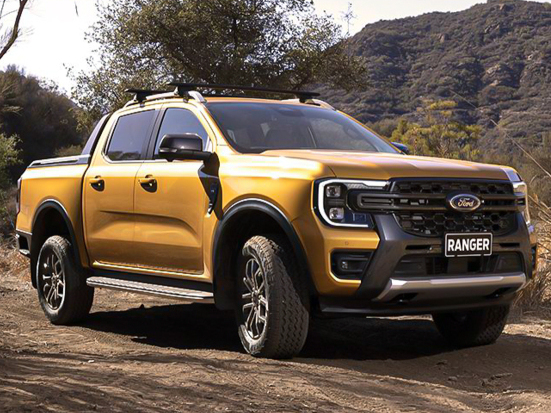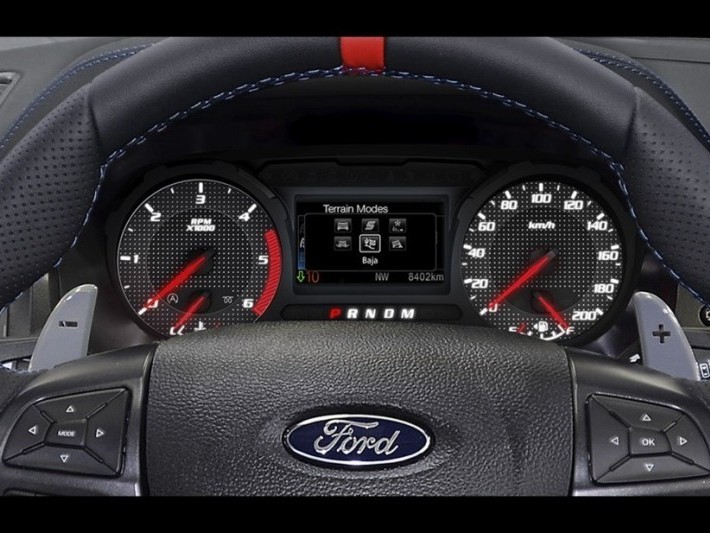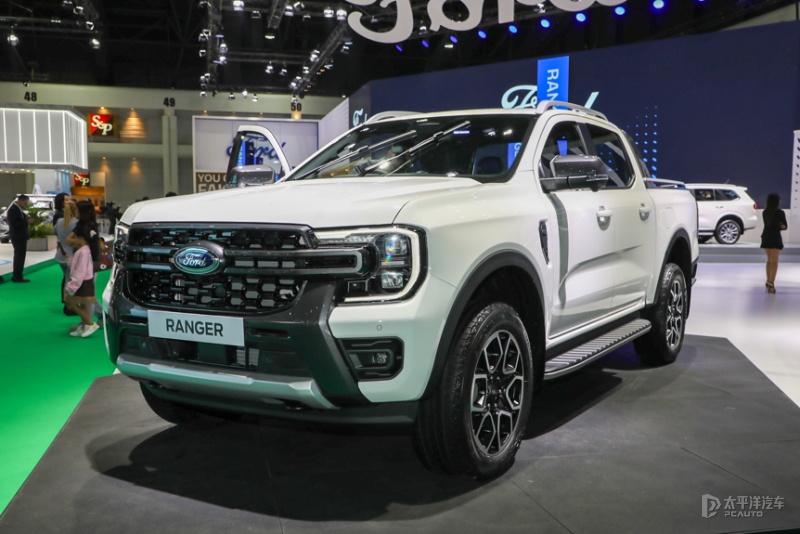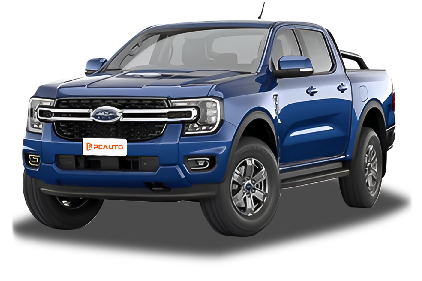Q
how to remove ford ranger rear bumper
To remove the rear bumper of a Ford Ranger, first, you'll need to gather tools like screwdrivers and wrenches, and make sure the truck is parked on a flat, safe surface. Start by popping open the tailgate. Usually, there are hidden mounting screws and clips along the inner and bottom edges of the rear bumper – grab your screwdriver and take those out. Keep an eye on the wheel arch areas on both sides too; there might be additional mounting points hiding there, so give those a thorough check. Once all the screws are out, gently pull the bumper outward, but be careful to disconnect any wiring harnesses attached to the body (like those for the reverse sensors or backup camera). Take your time with this whole process to avoid damaging the bumper or scratching the paint.
For our friends in Malaysia, the humid climate can mean bumper screws might be tough to remove due to rust – spritzing some rust penetrant beforehand can help loosen them up. Also, the Ranger's rear bumper is built to be both practical and tough, and some higher-trim models come with sensor setups, so extra care is needed to protect those wires during removal. If you regularly take your Ranger off-roading or use it for hauling, it’s a good idea to periodically check the bumper’s mounting condition to keep things safe on the road.
Special Disclaimer: This content is published by users and does not represent the views or position of PCauto.
Related Q&A
Q
What is the resale value of a 2022 Ford Ranger?
The used value of a 2022 Ford Ranger depends on several factors—new car pricing, condition, mileage, trim level, and market demand all play a role in resale value. Currently, pre-owned models retain roughly 70% to 85% of their original price, depending on maintenance history and overall shape. Higher-spec Wildtrak versions typically hold their value better.
Thanks to its dependable performance, practical cargo space, and strong off-road features, this pickup maintains steady demand in the used market, especially diesel-powered variants. Well-maintained, accident-free examples with full service records fetch stronger offers, while modified trucks might turn off some buyers.
If you're thinking of selling, it’s worth getting quotes from multiple dealers or online platforms and checking listings for comparable models to gauge a realistic price range. Keep in mind that pickups generally depreciate slower than sedans, though shifting regulations and economic conditions can still impact resale value.
Q
How much is a 2022 Ford Ranger?
Here’s a natural, human-sounding translation for an automotive editor:
---
**2022 Ford Ranger Pricing Overview**
The 2022 Ford Ranger’s price varies by trim and configuration, with a starting range of roughly RM 98,000 to RM 145,000. Final pricing depends on your choice of powertrain (like the 2.0L turbo-diesel or 3.2L five-cylinder diesel) and trim level (XL, XLT, or Wildtrak). Known for its rugged chassis and off-road capability, the Ranger also packs modern tech—think SYNC® infotainment and advanced driver aids.
A quick note: Used prices fluctuate based on mileage, condition, and remaining warranty, so always check official channels or dealers for the latest quotes. As a top contender in the midsize pickup segment, the Ranger balances daily driving with workhorse utility. Cross-shop rivals like the Toyota Hilux or Isuzu D-Max if you’re weighing options.
---
This version keeps the info clear and engaging while sounding like a real editor wrote it—no robotic tone. Let me know if you'd tweak any phrasing!
Q
What Ford engines are being recalled in 2022?
Ford issued a global recall in 2022 for certain vehicles equipped with the 2.7L EcoBoost V6 engine, including popular models like the F-150 pickup and Edge SUV. The action addresses a potential design flaw in the engine's oil separator that could lead to leaks and increased fire risk.
This proactive recall reflects Ford's commitment to addressing safety concerns before they become problems. Owners can check if their vehicle is affected through Ford's official channels and visit authorized dealers for complimentary repairs.
For drivers of these models, it's smart to regularly check oil levels and inspect the engine bay—catching issues early is always better. While recalls might sound alarming, modern automakers have robust systems in place to protect customers. The key is to act promptly when notified.
To keep your engine running smoothly long-term, stick to Ford's recommended maintenance schedule and use approved oil grades. And hey, keeping detailed service records never hurts—it’s your proof of proper care down the road.
Q
Are there any problems with the 2022 Ford Ranger?
The 2022 Ford Ranger proves to be a dependable midsize pickup overall, though some owners have reported typical niggles. The infotainment system occasionally acts up with lagging or delayed responses – something that tends to improve with subsequent software updates. A handful of drivers also mention slightly jerky transmission shifts at low speeds, though this usually smooths out once you adapt to the driving mode.
Where the Ranger really shines is its rock-solid 2.0L turbo-diesel engine, which delivers consistent performance and decent fuel efficiency, making it great for long hauls or hauling loads. Just remember: staying on top of maintenance is key, especially for diesel models – don’t skip those fuel filter changes and keep an eye on the DPF system.
If you’re eyeing a used 2022 Ranger, pay extra attention to the undercarriage for signs of heavy use, since pickups often handle tough workloads. That said, this truck holds up well for durability and off-road capability. Most quirks are minor and don’t get in the way of daily driving, plus dealerships usually have fixes on hand.
Q
What is the warranty on a 2022 Ford Ranger?
The 2022 Ford Ranger comes with a standard 3-year/100,000-km warranty (whichever comes first), covering manufacturing defects and material quality issues. The powertrain is backed by a 5-year/160,000-km warranty (whichever occurs first), including core components like the engine, transmission, and drivetrain. Additionally, Ford provides a 6-year unlimited-mileage corrosion perforation warranty.
Keep in mind that warranty terms may vary depending on trim levels or promotional offers, so it’s best to check with your dealer for the latest details before purchasing. For pickup trucks, these coverage periods are fairly typical—especially the extended powertrain warranty, which often outlasts those on passenger cars, reflecting the manufacturer’s confidence in durability.
If you frequently use the Ranger for heavy-duty work or off-roading, pay extra attention to the coverage for the drivetrain and underbody components. Also, remember that sticking to scheduled maintenance at authorized service centers is crucial to keeping your warranty valid. Using aftermarket parts or skipping recommended services could void your coverage.
Q
How many miles will a 2022 Ford Ranger last?
The 2022 Ford Ranger is built to last between 200,000 to 300,000 miles (roughly 320,000 to 480,000 kilometers) with proper care and regular maintenance—though actual lifespan depends on driving habits, road conditions, and service frequency. This truck’s tough chassis and proven powertrains, especially the 2.0L EcoBlue and 3.2L Duratorq diesel engines, handle daily city and rural driving with ease. Staying on top of critical maintenance like oil changes, filter replacements, and transmission fluid services goes a long way in keeping it running.
Keep in mind: Rangers are designed for heavy-duty work, so their suspension and underbody components typically outlast regular passenger cars. If you frequently haul loads or go off-road, consider shortening service intervals and inspecting the undercarriage regularly. Don’t overlook electronics either—modern sensors and control modules play a big role in long-term reliability. Always opt for genuine parts and certified technicians to preserve the truck’s condition.
Bottom line? The Ranger sits above average in its class for durability. With proper upkeep, it’s easily a 15-year truck.
Q
Is there a recall on the 2022 Ford Ranger?
Based on current information, the 2022 Ford Ranger did undergo recalls in certain global markets for specific issues—primarily involving potential seatbelt pretensioner faults and loose rear axle bolts, which posed safety concerns. Owners can check their vehicle’s recall status by entering the VIN on Ford’s official website. We recommend staying updated through local dealer notifications or official channels to ensure your truck meets safety standards.
Keep in mind that recalls are standard manufacturer measures to address potential issues—not necessarily indicators of poor quality. They demonstrate proactive responsibility by offering free repairs.
For more details on Ranger maintenance—like diesel engine service intervals or 4WD system care—reach out to an authorized service center. They’ll provide tailored advice to keep your rig running smoothly.
Q
What are common problems with the 2022 Ranger?
**2022 Ranger Common Issues (From an Auto Editor's Perspective)**
As one of the hottest pickups in its class, the 2022 Ranger does have a few common quirks worth noting. Some owners report occasional infotainment glitches—freezing or black screens—but a software update usually sorts it out. The transmission can feel a bit jerky at low speeds, which isn’t uncommon for trucks in this segment. Just keep an eye on the fluid condition during routine maintenance.
The high-strength steel body boosts safety, but you might notice faint creaks around some panel gaps, especially on rough roads. Also, if you’re frequently towing heavy loads, keep a closer check on the turbocharged engine’s cooling system—shortening the coolant replacement interval helps.
The rear leaf springs? Great for payloads, but empty rides get bouncy. That’s just physics, not a defect. Bottom line: None of these are dealbreakers, and most fixes are a quick dealer visit away. Stick to the service schedule, keep the software updated, and you’ll dodge 90% of these minor headaches.
Q
What is the fuel economy of the Ford Ranger 2022?
The 2022 Ford Ranger's fuel efficiency varies depending on configuration and driving conditions. Models equipped with the 2.0L turbo-diesel engine average around 7.6L/100km combined, while the 3.0L V6 turbo-diesel version is slightly thirstier at approximately 8.5L/100km. Real-world figures may differ based on payload, terrain, and driving style.
Diesel engines deliver strong low-end torque, making them ideal for towing or long-distance cruising. With diesel fuel typically being cheaper at the pump, running costs can be lower over time. For city driving, keep an eye on the auto start-stop system—it helps cut down on idle fuel consumption. Regular maintenance, like air filter replacements and using the right engine oil, also plays a role in keeping efficiency optimal.
As a pickup that balances utility and performance, the Ranger's fuel economy sits mid-pack among rivals. It’s a solid choice if you need a versatile workhorse without breaking the bank at the fuel station.
Q
What engine is in a 2022 Ford Ranger?
The 2022 Ford Ranger offers a range of engine options to suit different needs. The workhorse is the 2.0L EcoBlue four-cylinder turbo-diesel, available in single-turbo (170hp/405Nm) and bi-turbo (213hp/500Nm) variants. Featuring high-pressure common rail injection, this mill delivers low-rev grunt and fuel efficiency – perfect for hauling or towing.
Some markets also get the 2.3L EcoBoost petrol engine (270hp/420Nm) with twin-scroll turbo and direct injection, catering to drivers who prioritize throttle response. All engines pair with a 10-speed auto box featuring an electronic rotary shifter and drive mode selector.
Heads-up for diesel buyers: The selective catalytic reduction (SCR) system requires periodic AdBlue top-ups to cut NOx emissions – standard stuff for modern diesels. If you regularly tackle long hauls or heavy loads, the bi-turbo diesel's 500Nm punch (available from just 1,800rpm) makes it the smart pick, especially for mountainous terrain or hot climate operation.
Popular Cars
Model Year
Car Compare
Car Photo
Latest Q&A
Q
What is the rpm of 180 hp motor?
The powerband of a 180-horsepower engine varies by model and intended design. Naturally aspirated engines typically hit peak power at 6,000-7,000 rpm, while turbocharged units like common 1.5T or 2.0T engines often deliver maximum punch between 5,000-6,000 rpm.
Remember the horsepower equation "HP = Torque × RPM ÷ 5252"? That's why modern turbo engines feel punchier at lower revs while sipping less fuel - they're making the same power with fewer revolutions.
Real talk though: you'll rarely need to wring it out to redline in daily driving. Most scenarios call for just 3,000-4,000 rpm for decent shove. Holding high revs constantly? That's just wearing out your engine faster.
Brands tune these differently too - some prioritize low-end grunt for city crawling, while others build power up top for highway passing. Match your right foot's personality when choosing.
Q
What is the rpm of a 10 hp motor?
The RPM of a 10-horsepower (hp) motor depends on its type and intended use. Typically, standard AC induction motors run between 1,450 and 2,900 RPM, while DC or variable-frequency motors may have a wider range—check the nameplate or technical manual for specifics.
In automotive applications, like small generators or auxiliary systems, a 10-hp motor’s speed is often matched to the vehicle’s needs. For example, certain booster pumps or cooling fans might operate between 1,800 and 3,600 RPM.
Keep in mind that horsepower (hp) and RPM aren’t directly linked. HP reflects power output, while RPM depends on factors like pole count and supply frequency (e.g., a 4-pole motor in a 50Hz region runs around 1,440 RPM). If you’re swapping or modifying a motor, always verify the torque curve and load requirements to avoid efficiency losses or damage.
Also, in EVs or hybrids, motors often run at much higher speeds (8,000 RPM or more), though these systems usually rate power in kilowatts (kW)—just remember 1 hp ≈ 0.746 kW for conversion.
Q
How to convert HP into RPM?
To convert horsepower (HP) to RPM, you need to understand their relationship—but there’s no direct conversion since HP measures power while RPM reflects crankshaft speed. Torque bridges the gap. The formula is:
**HP = (Torque × RPM) / 5252** (with torque in lb-ft).
Rearrange it to solve for RPM:
**RPM = (HP × 5252) / Torque**.
For example, an engine making 200 HP at 300 lb-ft of torque hits roughly 3500 RPM at that output.
Keep in mind:
- Engines have unique powerbands—peak HP and torque rarely align at the same RPM.
- Turbocharging, aspiration, and transmission gearing all alter how power translates to wheel speed.
- Real-world performance isn’t just about this math; check the dyno curve and drivetrain setup for the full picture.
Q
What is the rpm of a 60 hp motor?
A 60-horsepower engine's RPM range depends entirely on its design and application. For small gasoline engines, you're typically looking at 6,000-8,000 RPM to hit 60 hp. Diesel mills, with their torque advantage, can achieve the same power at just 3,000-4,500 RPM - check the manufacturer's power curve for exact figures.
Remember, horsepower doesn't scale linearly with RPM. Cylinder count, induction type (naturally aspirated vs. forced induction), and fuel delivery all play major roles. Take turbocharged engines - they'll deliver peak power at significantly lower revs.
For daily driving, most cars operate most efficiently in the 2,000-3,000 RPM sweet spot where power and fuel economy balance out. Want specifics on your ride? Crack open the owner's manual or hook up an OBD scanner. Tuning enthusiasts can always flash the ECU to alter power delivery, but be warned - that warranty won't honor itself, and reliability might take a hit.
Q
How many rpm is a 2 hp motor?
There’s no fixed direct relationship between a motor’s RPM and its horsepower (HP), as rotational speed depends on factors like motor design, load conditions, and power supply frequency. For example, a 2 HP AC motor under a 50Hz power standard (common in household or industrial use) typically has a synchronous speed of around 1500 RPM or 3000 RPM—determined by its pole count (4-pole or 2-pole)—though actual operating speed may drop slightly under load.
For DC or brushless motors, the RPM range can vary more widely, so always check the specs for the specific model. Application also plays a role: a 2 HP motor for pumps or fans usually runs at moderate speeds, while power tools may prioritize higher RPMs.
When selecting a motor, don’t just focus on power—consider torque, efficiency, and rated speed to match real-world needs. For precise figures, consult the manufacturer’s datasheet or a technical expert.
View MoreRelated News

2025 Ford Ranger WildTrak launched, the most powerful diesel version in the Ranger lineup
MichaelAug 25, 2025

Is the Ford Ranger V6 about to enter Malaysia?
LienAug 13, 2025

Reviewing the Ford Ranger: The Dual Advantages of Rugged Appearance and Powerful Performance
Kevin WongApr 21, 2025

"Starting from RM 170,888! Detailed Explanation of Ford Ranger's Configuration and Performance, a Synonym for Practicality and Versatility?"
AshleySep 20, 2024

Ford Ranger: A Safe, Reliable, and Economical Choice of Pickup
LienMay 2, 2024
View More


















Pros
Cons